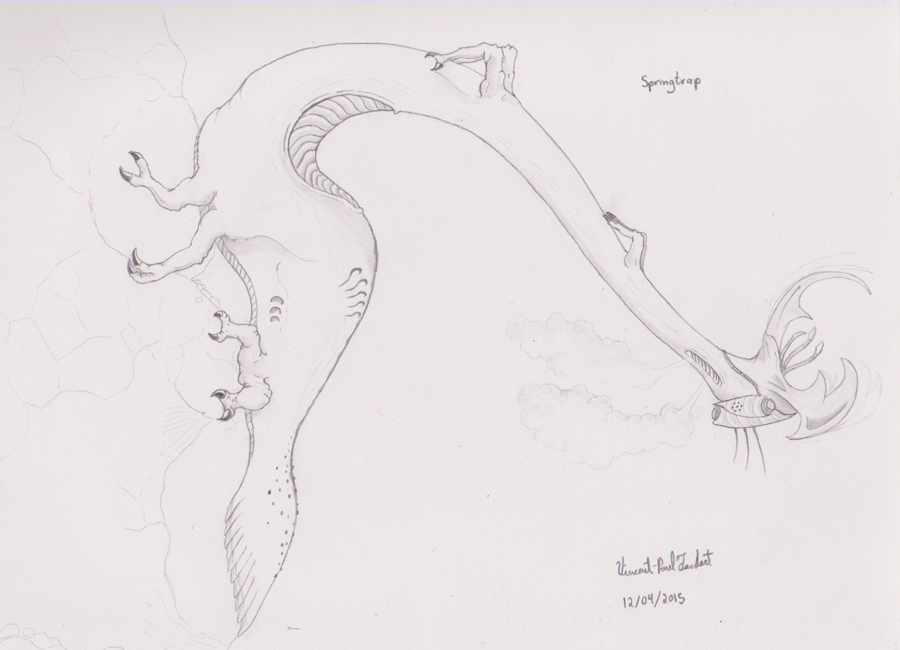HOME | DD
 Tapejara — Tunjera - Springtrap
Tapejara — Tunjera - Springtrap

#alien #armor #beak #camera #carnivore #creature #cup #cyborg #eye #form #helmet #hunter #life #lifeform #muscular #perched #planet #predator #robotic #space #suction #tail #vent #world #xenobiology #tunjera #extarterrestrial #springtrap
Published: 2015-04-12 21:09:26 +0000 UTC; Views: 1677; Favourites: 20; Downloads: 1
Redirect to original
Description
These slender creatures are distant relatives of the giant Titaniscythes (the desert god beasts) but only grow up to 20 meters in length on average. They are also fully carnivorous and have a spectacular hunting strategy. Unlike most Tunjeran predators that remain, Springtraps are stationary and spend most of their lives clinging to rock faces in the desert. Also, the forward of their body is coiled up like a cinnamon roll. When a prey item gets too close to it, the Springtrap uncoils its head at tremendous speed (almost 90 km/h), opens its beak wide and snaps it shut onto the unfortunate quarry.The forward portion has to be highly muscular in order to achieve such velocity. But only a portion of the necessary muscle power is found within such as slender creature. To obtain additional speed, it uses its small but highly muscular arms to push itself backwards. The design of these arms may be similar to those of Tyrannosaurids of ancient Earth are studying them may be especially beneficial.
But even these features alone wouldn't be enough for the Springtrap. So it had to evolve a unique feature within its skeleton. Some of the bones are hollow and contain piston like organs filled with dense air. When the Springtrap spots a prey item with its camera eyes, a signal from the main computer instructs the air to be released, forcing the neck to uncoil at almost break-neck speed. The air exits the body through special vents located behind the cranium. Those vents are also found on the Titaniscythes but do not share the same function.
Eight limbs that each are just as muscular as those on the forward portion of the body maintain a strong grip on the rock face where that the Springtrap clings to. To help the animal remain perched even in a hurricane, the tail portion of the body has evolved into a giant suction cup, making it difficult for anything to remove the animal. Should the Springtrap ever fall off, the will clumbsily attempt to return to the face but will need luck to evade potential predators. Springtraps actually face difficult decisions. Those that are perched at the highest point are safer from hunters but have less options in terms of food and must settle for flying game. Those who are perched closer to the ground are more vulnerable to attack but have more options in terms of food, including the fast moving Sand Shifters.
Related content
Comments: 2

well, the ones that remain yes.
👍: 0 ⏩: 0


























